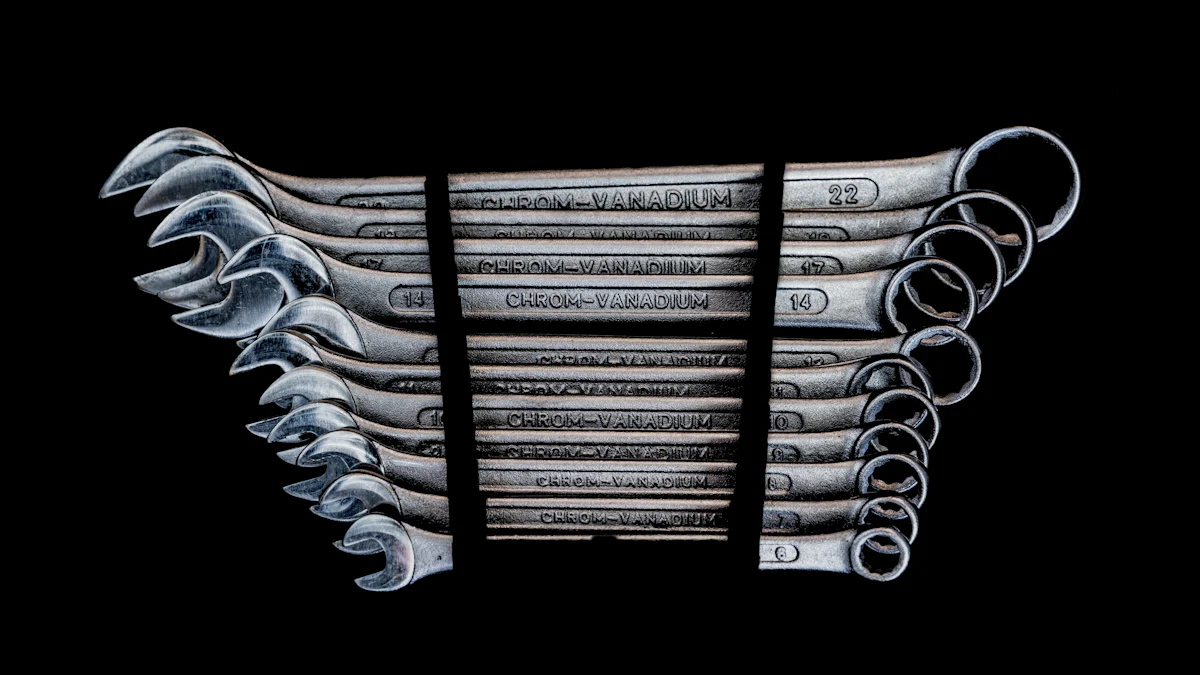 Understanding wrench sizes is a crucial aspect for any DIYer embarking on a project. With 75% of homeowners attempting DIY projects, the right wrench size can make or break the task at hand. Mistakes are common, as 80% of people report errors in their projects. As an essential handbook for DIY enthusiasts, this blog will delve into the intricacies of wrench sizes, ensuring you have the knowledge needed to tackle any project successfully.
Understanding wrench sizes is a crucial aspect for any DIYer embarking on a project. With 75% of homeowners attempting DIY projects, the right wrench size can make or break the task at hand. Mistakes are common, as 80% of people report errors in their projects. As an essential handbook for DIY enthusiasts, this blog will delve into the intricacies of wrench sizes, ensuring you have the knowledge needed to tackle any project successfully.
Understanding Wrench Sizes
When it comes to wrench sizes, having a clear understanding is paramount for any DIYer. The most commonly used SAE sizes include 5/16, 3/8, 7/16, 1/2, 9/16, 5/8, 11/16, and 3/4 inches. On the other hand, Metric sizes provide a different range for various applications. These measurements are crucial as they determine the compatibility between the wrench and the fastener.
Wrench sizes are measured in two primary ways: across the flats and based on bolt nominal size. Across the flats refers to the distance between two opposite points on a hexagonal fastener head. This measurement ensures that the wrench fits securely onto the fastener without slipping. Bolt nominal size indicates the diameter of the bolt that corresponds to a specific wrench size.
Understanding these measurements is essential for selecting the right tool for your project. Whether you’re working with standard American wrench sizes like 5/8 or metric measurements in millimeters, choosing the correct wrench size can significantly impact your project’s success. Remember that each size serves a specific purpose and using an incorrect size can lead to inefficiency or potential damage.
By grasping how wrench sizes are determined and their significance in various applications, DIYers can confidently tackle projects with precision and accuracy.
Types of Wrenches
Open-End Wrenches
An Open-End Wrench is a versatile tool with a U-shaped opening on both ends, allowing it to work with two different sizes of fasteners. This design provides flexibility in various situations, especially when dealing with tight spaces or hard-to-reach areas. The open-end wrench’s simplicity makes it easy to use and essential for tasks where a socket wrench might not fit.
Features and Uses
- Fastener Grip: Open-end wrenches provide a strong grip on fasteners, minimizing the risk of slipping during tightening or loosening.
- Compact Design: Their slim profile enables access to confined spaces where other wrench types might struggle to reach.
- Non-Ratcheting: Unlike socket wrenches, open-end wrenches do not have a ratcheting mechanism, requiring manual repositioning after each turn.
Socket Wrenches
Socket Wrenches are popular for their interchangeable sockets that fit various bolt sizes. They offer efficiency and speed in turning fasteners due to their ability to maintain contact while rotating. Socket wrench sets come in different drive sizes, providing compatibility with an array of socket attachments for diverse applications.
Drive Sizes
- 1/4 inch: Suitable for smaller bolts and screws.
- 3/8 inch: A versatile size for general use.
- 1/2 inch: Ideal for larger fasteners and heavy-duty tasks.
- 3/4 inch: Reserved for industrial-grade applications requiring high torque.
Ratchet Mechanism
- Efficient Operation: The ratcheting mechanism allows continuous rotation without removing the wrench from the fastener, saving time and effort.
- Directional Switch: Most socket wrenches feature a switch to change the direction of rotation quickly.
Adjustable Wrenches
Adjustable Wrenches offer adaptability by featuring an adjustable jaw width, eliminating the need for multiple fixed-size wrenches. While they provide versatility in handling various nut sizes, they have limitations regarding torque application due to their design.
Versatility and Limitations
- Single Tool Multiple Sizes: Adjustable wrenches can accommodate different nut sizes using one tool, reducing the need for an extensive collection.
- Torque Limitation: Due to their adjustable nature, these wrenches may not withstand high torque levels compared to fixed-size counterparts.
Choosing the Right Wrench
When selecting a wrench for a task, size and fit play a crucial role in ensuring efficiency and accuracy. The correct size ensures a secure grip on the fastener, preventing slippage during tightening or loosening. It’s essential to match the wrench size precisely to the fastener to avoid damaging both the tool and the hardware. Additionally, considering the material and durability of the wrench is vital for long-term usage.
For DIYers, investing in an essential wrench set can provide versatility for various projects. A comprehensive set typically includes different sizes and types of wrenches, allowing you to tackle a wide range of tasks without limitations. Having a diverse selection at your disposal ensures that you have the right tool for any job that comes your way.
Proper maintenance and care of your wrenches are equally important to ensure their longevity and optimal performance. Regularly cleaning your tools after use and storing them in a dry environment can prevent rust and corrosion, extending their lifespan. Lubricating moving parts can also enhance their functionality, making your DIY projects smoother and more efficient.
Remember, choosing the right wrench involves more than just picking a random tool from your toolbox. By understanding how size, fit, material, and maintenance impact your work, you can elevate your DIY skills to new heights.
Recapping the fundamental aspects of wrench sizes is crucial for any DIYer. Understanding the significance of selecting the right wrench size can greatly impact project success. Proper wrench selection ensures a secure fit and minimizes errors during tasks. For further insights, exploring additional reading materials and resources can enhance your knowledge and proficiency in handling various projects effectively. Keep expanding your understanding of wrench sizes to elevate your DIY skills and tackle future endeavors with confidence.
